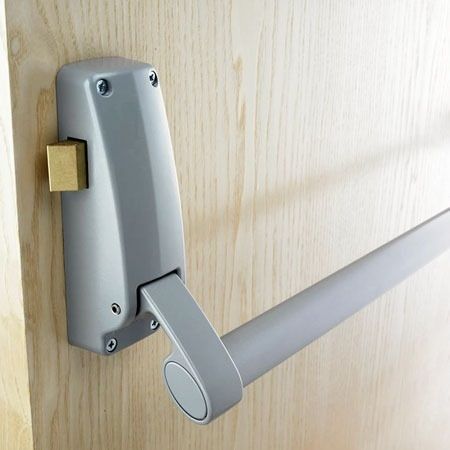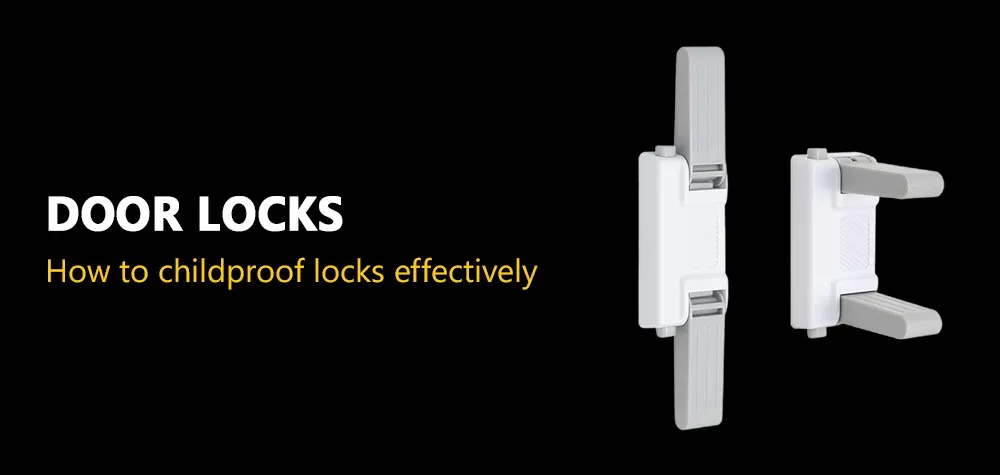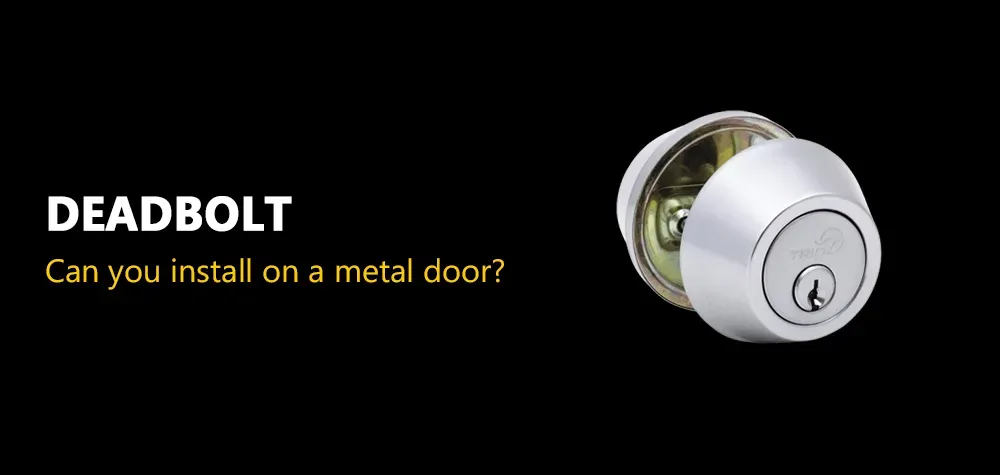Door Locks For Emergency Exits
Importance of door locks for emergency exits
As experts in building safety and security, we understand the critical role that emergency exits play in protecting lives during crisis situations. Picture this: the sudden onset of a fire, a panicked rush to escape, and the one thing standing between safety and chaos is the reliability of your emergency exit door locks. It's not just about hardware; it's about ensuring a swift and orderly evacuation, where every second counts.
Read more about Role of doors in home security!
In this blog post, we delve into the world of emergency exit door locks, exploring the diverse range of options available, from traditional panic bars to innovative smart lock solutions. We'll guide you through the labyrinth of legal requirements and regulations, ensuring your compliance with building codes and safety standards. But it doesn't end there. We'll also uncover the often-overlooked factors to consider when selecting door locks, such as durability, ease of use, and compatibility with your building's unique layout.
Moreover, we'll share best practices for installation and maintenance, drawing from real-life case studies and examples. From successful implementations to the challenges faced and lessons learned, we'll equip you with the knowledge needed to safeguard your building and its occupants effectively.
Join us on this journey as we explore the world of emergency exit door locks—a journey that could mean the difference between chaos and calm, between danger and safety. Let's empower ourselves with the expertise to ensure that when the time comes, our emergency exits are not just doors but pathways to salvation.
Learn more about Securing a door lock with traditional locks!
Types of Emergency Exit Door Locks
Panic Bars
Panic bars, also known as push bars or crash bars, are a staple in emergency exit door locks, renowned for their simplicity and effectiveness in facilitating swift egress during emergencies. These bars typically consist of a horizontal bar mounted across the interior side of an outward-swinging door. The mechanism is ingeniously simple: when pressure is applied to the bar, it triggers the unlocking mechanism, allowing the door to swing open easily. This design is particularly advantageous in high-stress situations, as it requires minimal effort and no specialized knowledge to operate. Furthermore, panic bars are often designed to comply with building codes and fire safety regulations, ensuring that they provide a reliable means of escape in various emergency scenarios.
Despite their widespread use and undeniable benefits, panic bars do come with a few limitations. One key consideration is the potential for accidental activation, leading to unauthorized exits or false alarms. This risk is particularly pertinent in crowded environments or areas with high foot traffic, where inadvertent pressure on the bar could result in unnecessary disruptions. Additionally, panic bars may not be suitable for all door configurations, especially those with inward-swinging doors or limited space for installation. However, when implemented correctly and coupled with proper training for occupants, panic bars remain a cornerstone of emergency exit door lock systems, offering a robust solution for ensuring building safety and security.

Push/Pull Handles
Push/pull handles represent another common variant of emergency exit door locks, prized for their intuitive operation and versatility across various architectural settings. These handles typically feature a straightforward design, comprising a horizontal or vertical bar attached to the door, which users can push or pull to unlatch and open the door. The functionality is inherently user-friendly, requiring no complex maneuvers or specialized knowledge to operate effectively. This simplicity makes push/pull handles ideal for environments where rapid evacuation is paramount, such as public buildings, schools, and healthcare facilities. Moreover, their ergonomic design caters to individuals of all ages and physical abilities, promoting inclusivity and accessibility in emergency situations.
While push/pull handles offer numerous advantages, they are not without their limitations. One potential drawback is the risk of accidental engagement, particularly in crowded or high-traffic areas where users may inadvertently bump into the handles, causing unintended openings. To mitigate this risk, proper signage, training, and periodic maintenance are essential to ensure that the handles function reliably and are not prone to malfunction. Additionally, push/pull handles may not be suitable for certain door configurations, such as those with heavy or oversized doors, where alternative locking mechanisms may be more appropriate. Despite these considerations, push/pull handles remain a popular choice for emergency exit door locks, striking a balance between ease of use, reliability, and universal accessibility.
Thumb-turn Deadbolts
Thumb-turn deadbolts offer a different approach to emergency exit door locks, providing a secure yet easily accessible means of egress in various scenarios. These locks typically feature a thumb-turn mechanism located on the interior side of the door, allowing occupants to quickly unlock the door with a simple twist of the thumb. Unlike panic bars or push/pull handles, thumb-turn deadbolts provide a more traditional locking mechanism, akin to standard deadbolts commonly found on residential doors. However, their strategic placement and intuitive operation make them well-suited for emergency situations, where rapid evacuation is essential.
The features and operation of thumb-turn deadbolts are relatively straightforward, making them suitable for a wide range of applications. When engaged, the deadbolt extends into the door frame, providing an additional layer of security against unauthorized entry. In an emergency, occupants can easily retract the deadbolt by rotating the thumb-turn, allowing the door to swing open without the need for excessive force or complicated maneuvers. This simplicity makes thumb-turn deadbolts particularly appealing in settings where aesthetics and ease of use are prioritized, such as office buildings, hotels, and retail establishments. Additionally, thumb-turn deadbolts offer versatility in terms of installation, accommodating various door materials and configurations to ensure seamless integration into existing architectural designs.
Despite their advantages, thumb-turn deadbolts may not be suitable for all emergency exit scenarios. One potential limitation is the reliance on manual operation, which could pose challenges for individuals with limited dexterity or mobility impairments. To address this concern, it's crucial to provide alternative means of egress, such as additional exit routes equipped with more accessible locking mechanisms or assistive devices. Additionally, thumb-turn deadbolts may require periodic maintenance to ensure smooth operation and prevent issues such as jamming or sticking. However, with proper installation, maintenance, and consideration of occupant needs, thumb-turn deadbolts can serve as reliable and effective emergency exit door locks, offering a balance of security, accessibility, and ease of use.
Legal Requirements and Regulations
Building Codes and Standards
Navigating the maze of building codes and standards is essential for ensuring compliance and, more importantly, the safety of occupants during emergencies. Building codes, established by local authorities or regulatory bodies, set forth the minimum requirements for structural integrity, fire safety, and accessibility in buildings. These codes often dictate specific criteria for emergency exits, including the number, size, and placement of exits, as well as the types of locking mechanisms permitted. Compliance with building codes is non-negotiable and requires meticulous attention to detail during both the design and construction phases of a building project. Failure to adhere to these regulations not only jeopardizes the safety of occupants but also exposes property owners to legal liabilities and penalties.
ADA (Americans with Disabilities Act) Compliance
Incorporating ADA compliance into emergency exit door locks is not just a legal requirement; it's a moral imperative to ensure inclusivity and equal access for all individuals, regardless of physical ability. The ADA mandates that buildings must provide accessible means of egress for people with disabilities, including those using mobility aids such as wheelchairs or walkers. This requirement extends to emergency exit door locks, which must be operable by individuals with a wide range of abilities. Lever-style handles, for example, are preferred over knobs, as they are easier to grip and require less dexterity to operate. Additionally, door locks must be positioned at accessible heights and equipped with clear signage to facilitate navigation for individuals with visual impairments. By prioritizing ADA compliance in emergency exit design, we not only meet legal obligations but also foster an environment of inclusivity and dignity for all occupants.
Fire Safety Regulations
Fire safety regulations play a crucial role in shaping the design and functionality of emergency exit door locks, with the primary objective of facilitating rapid evacuation and minimizing the spread of fire and smoke. These regulations outline specific requirements for fire-rated doors, exit signage, and locking mechanisms to ensure optimal performance under fire conditions. For instance, emergency exit door locks must allow for quick and unrestricted egress without the need for keys or special tools. Moreover, certain jurisdictions may impose additional requirements, such as the installation of fire alarm systems or the designation of fire lanes for emergency responders. Compliance with fire safety regulations is paramount, as failure to do so can have catastrophic consequences in the event of a fire emergency. By adhering to these regulations and implementing robust fire safety measures, we can safeguard lives and property and mitigate the impact of fire-related incidents.
Factors to Consider When Choosing Door Locks
When selecting door locks for emergency exits, several critical factors must be carefully considered to ensure the safety and security of building occupants.
Durability and Reliability: Emergency exit door locks must withstand the rigors of daily use and remain operational even under adverse conditions. Look for locks constructed from high-quality materials and equipped with robust mechanisms to ensure long-term durability and reliability.
Ease of Use in Emergencies: In a crisis situation, every second counts. Choose door locks that are intuitive and easy to operate, even under stress or panic. Features such as clear signage, ergonomic handles, and simple unlocking mechanisms can facilitate swift egress and minimize the risk of injury or confusion during emergencies.
Compatibility with Building Design and Layout: Consider the unique architectural features and layout of your building when selecting door locks. Ensure that chosen locks integrate seamlessly with existing structures and complement the overall design aesthetic. Additionally, take into account factors such as door size, swing direction, and accessibility requirements to choose locks that fit your building's specific needs.
Best Practices for Installation and Maintenance
Implementing proper installation and maintenance practices is essential for maximizing the effectiveness and longevity of emergency exit door locks.
Proper Installation Techniques: Ensure that door locks are installed correctly according to manufacturer guidelines and relevant building codes. Proper alignment, secure mounting, and appropriate hardware selection are critical to prevent issues such as misalignment or premature wear.
Regular Inspection and Maintenance Procedures: Establish a routine maintenance schedule to inspect and maintain emergency exit door locks regularly. Check for signs of wear or damage, lubricate moving parts as needed, and promptly address any issues to ensure continued functionality and reliability.
Training for Building Occupants on Emergency Exit Usage: Provide comprehensive training for building occupants on the proper use of emergency exits and door locks. Educate individuals on evacuation procedures, familiarize them with the location and operation of exit routes, and emphasize the importance of keeping exit pathways clear at all times.
Conclusion
In conclusion, investing in effective door locks for emergency exits is paramount for ensuring the safety and security of building occupants. By carefully considering factors such as durability, ease of use, and compatibility with building design, and implementing best practices for installation, maintenance, and occupant training, you can create a safer environment for everyone. Keep abreast of emerging technologies and innovations in emergency exit door lock design to stay ahead of the curve and prepare for future challenges. Remember, when it comes to emergency exits, every detail matters, and every decision can make a difference in saving lives.
Call Us Any Time!



